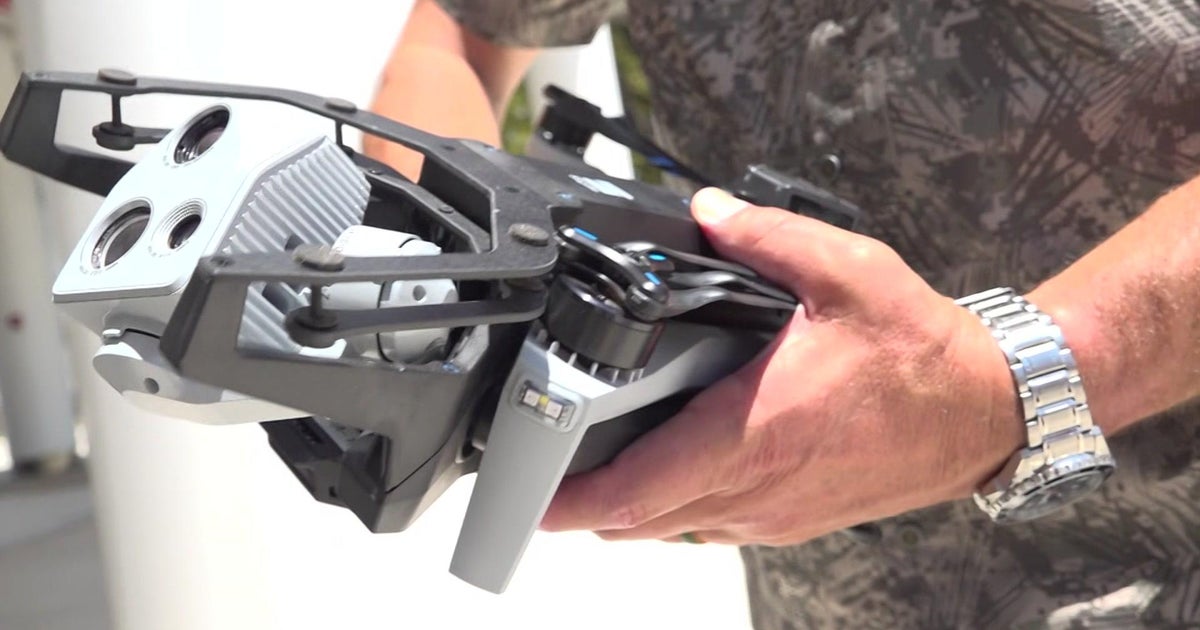Asteroid Makes Closest Approach To Earth In Recorded History
CAPE CANAVERAL (CBSMiami/AP) — It's not going to hit us but a 150-foot-wide asteroid will come remarkably close to Earth Friday, even closer than high-flying communication and weather satellites. It will be the nearest known flyby for an object of this size in recorded history.
But don't worry. Scientists promise the megarock will be at least 17,100 miles away when it zips past.
"No Earth impact is possible," said Donald Yeomans, manager of NASA's Near-Earth Object program at Jet Propulsion Laboratory in Pasadena, Calif. The Near-Earth Object program detects and tracks asteroids and comets passing close to Earth using both ground and space-based telescopes.
Even the chance of an asteroid-satellite run-in is extremely remote, Yeomans and other scientists noted. A few hundred satellites orbit at 22,300 miles, higher than the asteroid's path, although operators are being warned about the incoming object for tracking purposes.
"No one has raised a red flag, nor will they," Yeomans told reporters. "I certainly don't anticipate any problems whatsoever."
Impossible to see with the naked eye, the asteroid is considered small as these things go. By contrast, the one that took out the dinosaurs 65 million years ago was 6 miles wide.
Yet Asteroid 2012 DA14, as it's known for its discovery date, still could pack a wallop.
If it impacted Earth — which it won't, scientists said it would release the energy equivalent of 2.4 million tons of TNT and wipe out 750 square miles. That's what happened in Siberia in 1908, when forest land around the Tunguska River was flattened by a slightly smaller asteroid that exploded about five miles above ground.
The likelihood of something this size striking Earth is once in every 1,200 years. A close, harmless encounter like this is thought to occur every 40 years.
The bulk of the solar system's asteroids are located between the orbits of Mars and Jupiter, and remain stable there for billions of years. Some occasionally pop out, though, into Earth's neighborhood
The closest approach of this one will occur next Friday afternoon, Eastern time, over Indonesia.
There won't be much of a show. The asteroid will zip by at 17,400 mph. That's roughly eight times faster than a bullet from a high-speed rifle.
The asteroid will be invisible to the naked eye and even with binoculars and telescopes will appear as a small point of light. The prime viewing locations will be in Asia, Australia and eastern Europe.
Observers in the U.S. can pretty much forget it. Astronomers using NASA's deep-space antenna in California's Mojave Desert will have to wait eight hours after the closest approach to capture radar images.
Scientists welcome whatever pictures they get. The asteroid offers a unique opportunity to observe something this big and close, and any new knowledge will help if and when another killer asteroid is headed Earth's way.
The close approach also highlights the need to keep track of what's out there, if for no other reason than to protect the planet.
NASA's current count of near-Earth objects: just short of 10,000, the result of a concentrated effort for the past 15 years. That's thought to represent less than 10 percent of the objects out there.
No one has ruled out a serious Earth impact, although the probability is said to be extremely low.
"We don't have all the money in the world to do this kind of work" for tracking and potentially deflecting asteroids, said Lindley Johnson, an executive with the Near-Earth Object observations program in Washington.
Indeed, when asked about NASA's plans to send astronauts to an asteroid in the decades ahead, as outlined a few years ago by President Barack Obama, Johnson said the space agency is looking at a number of options for human explorations.
One of the more immediate steps, planned for 2016, is the launch of a spacecraft to fly to a much bigger asteroid, collect samples and return them to Earth in 2023.
As for Asteroid 2012 DA14 — discovered last year by astronomers in Spain — scientists suspect it's made of silicate rock, but aren't sure. Its shape and precise size also are mysteries.
What they do know with certainty:
"This object's orbit is so well known that there's no chance of a collision," Yeomans said. "Its close approach, in fact, will alter its orbit around the sun in such a way as to keep it out of Earth's neighborhood, at least in the foreseeable future."
Johnson anticipates no "sky is falling thing" related to the flyby.
He and other scientists urged journalists to keep the close encounter in perspective.
"Space rocks hit the Earth's atmosphere on a daily basis. Basketball-size objects come in daily. Volkswagen-size objects come in every couple of weeks," Yeomans said.
The grand total of stuff hitting the atmosphere every day? "About 100 tons," according to Yeoman, though most of it arrives harmlessly as sand-sized particles.
(TM and © Copyright 2013 CBS Radio Inc. and its relevant subsidiaries. CBS RADIO and EYE Logo TM and Copyright 2013 CBS Broadcasting Inc. Used under license. All Rights Reserved. This material may not be published, broadcast, rewritten, or redistributed. The Associated Press contributed to this report.)



